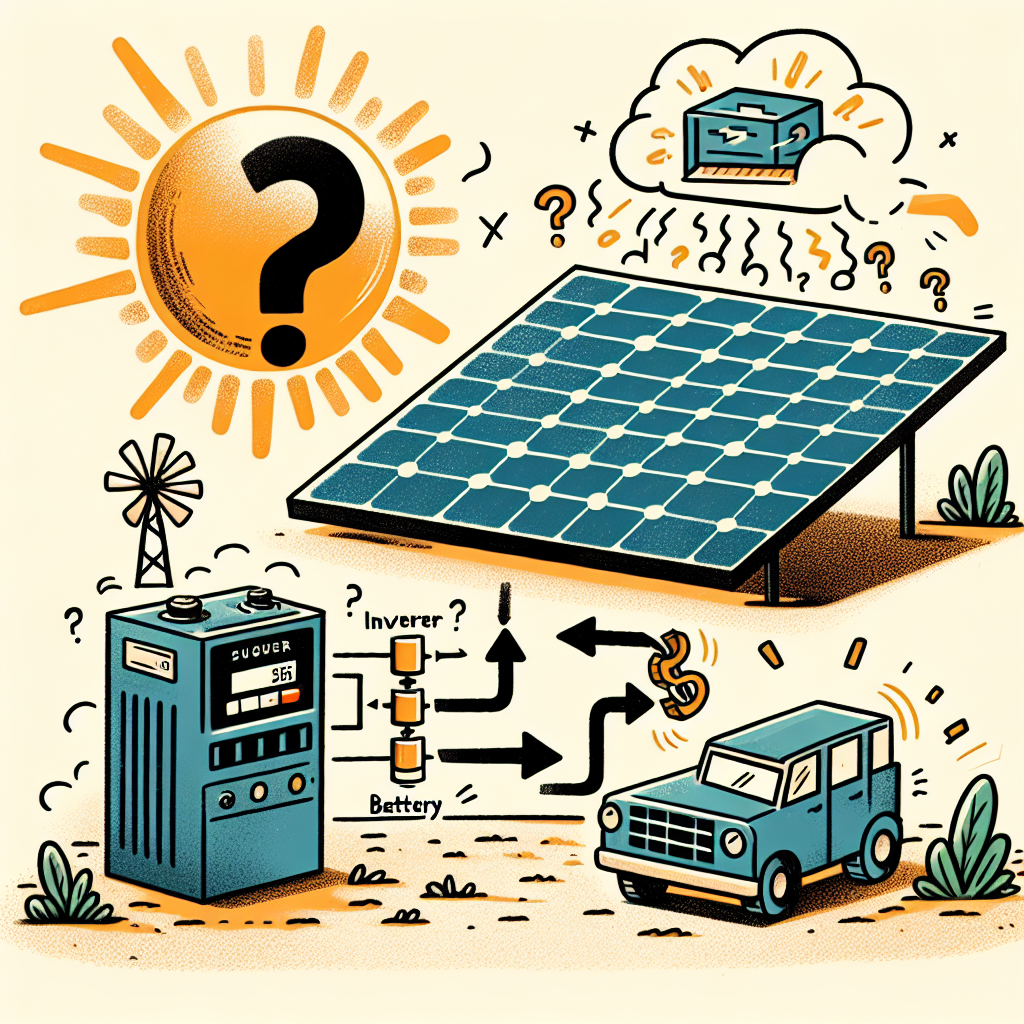Does Solar Panel Need Battery?
Whether a solar panel needs a battery or not is a common question posed by many. The answer is no, solar panels do not necessarily need a battery. A solar panel can function without a battery when connected to an inverter, which converts the solar energy into usable electricity. However, without a battery, the energy produced is unable to be stored for later use.
There are a few scenarios where operating your solar panel without a battery makes sense. If you are located in an area with reliable, constant sunlight, and you use all the energy your solar panels produce during daylight hours, then a battery might not be necessary. Additionally, if you’re connected to a grid and can sell excess power back, you might not need a battery.
Connect Solar Panel to Inverter Without Battery
It is entirely possible to connect a solar panel directly to an inverter without a battery. The DC power generated by the solar panel can be converted into AC power by an inverter, which can then be used directly by appliances. However, the efficiency of this setup heavily relies on the amount of sunlight available. If sunlight is consistent and ample, the system will perform well. But if sunlight is irregular or insufficient, the system’s output may fluctuate, leading to instability.
On the other hand, a system with a battery can store excess power generated during the day to be used during the night or on cloudy days. This can ensure a more consistent power supply.
Solar Panel Inverter Without Battery
A solar panel inverter without a battery, often known as a grid-tie inverter, is becoming more popular due to its cost-effectiveness and simplicity. This setup allows you to feed the power your solar panels generate directly into the grid, essentially using the grid as your ‘battery’. When your solar panels aren’t producing enough power, you can draw electricity from the grid.
However, this setup does have its disadvantages. In the event of a power outage, you won’t have any backup power. Furthermore, if you produce more power than you use, you might be able to sell it back to the grid, but this depends on your local electricity provider’s policy.
Inverter Battery with Solar Panel
Connecting an inverter battery with a solar panel is a great option for those wanting a more stable and reliable power supply. The battery stores excess energy from the solar panels, which can then be used when needed. This increases the efficiency of your solar power system and guarantees that you’ll always have power, even during power outages or on cloudy days.
However, it’s important to note that adding a battery to your solar panel system increases the upfront costs and requires additional maintenance. But in the long run, it can provide significant savings on your electricity bills and make your home more sustainable and energy-efficient.
Can I Connect a Solar Panel Directly to an Inverter?
Yes, you can connect a solar panel directly to an inverter. This setup converts the DC power from the solar panel into AC power, which can be used by appliances. However, without a battery, the system can only supply power when the solar panel is receiving sufficient sunlight. This means that at night or during cloudy days, the system may not provide power.
For a more consistent power supply, consider adding a battery to your solar panel system. Although this adds to the initial cost, it ensures that you have power at all times, regardless of the weather or time of day.
